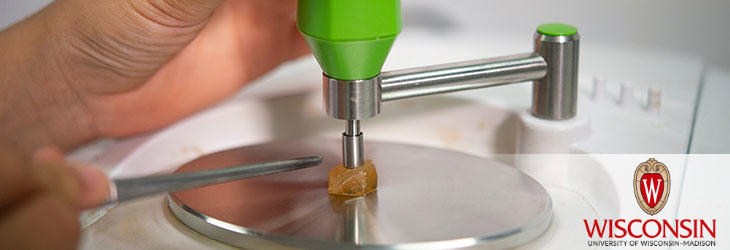Research Tools

Low-Waste and Contamination Device for Isolating Cells from a Biological Sample
WARF: P120222US01
Inventors: David Beebe, Scott Berry, David Guckenberger, Ben Casavant
The Wisconsin Alumni Research Foundation (WARF) is seeking commercial partners interested in developing an improved method for extracting and purifying a fraction from complex background material that reduces contact with settled contaminants.
Overview
For diagnosis and research it often is necessary to isolate a subset of cells from a sample that contains bodily fluids, contaminants, tissue and other types of cells. For example, determining a patient’s likelihood of survival can require catching five circulating cancer cells against 7.5 billion background cells.
This process can be long, expensive and arduous. Previous microfluidic devices have been designed to maximize resources and labor, yet contamination problems occurred in complex samples when cells of interest were magnetically drawn into the path of contaminants. Improved designs must address this issue for quick, clean and efficient isolation.
This process can be long, expensive and arduous. Previous microfluidic devices have been designed to maximize resources and labor, yet contamination problems occurred in complex samples when cells of interest were magnetically drawn into the path of contaminants. Improved designs must address this issue for quick, clean and efficient isolation.
The Invention
UW–Madison researchers have developed an improved microfluidic device for isolating a desired fraction without the sample loss or contamination associated with prior designs.
The device features multiple wells through which a magnet (positioned perpendicularly to gravity) is drawn, attracting the fraction from one well to the next while undesired material settles to the bottom. For this to occur the biological sample first is combined with a magnetically attractive reagent that binds to the targeted fraction and forms a solid-phase substrate.
The sample is deposited in the first well and then magnetically drawn through a second well containing an isolation buffer like oil or wax. The increasingly purified cells are drawn into a final well for extraction or further treatment. Surface tension prevents fluid from spilling between wells.
The device features multiple wells through which a magnet (positioned perpendicularly to gravity) is drawn, attracting the fraction from one well to the next while undesired material settles to the bottom. For this to occur the biological sample first is combined with a magnetically attractive reagent that binds to the targeted fraction and forms a solid-phase substrate.
The sample is deposited in the first well and then magnetically drawn through a second well containing an isolation buffer like oil or wax. The increasingly purified cells are drawn into a final well for extraction or further treatment. Surface tension prevents fluid from spilling between wells.
Applications
- Isolating fractions
- High-throughput screening
- Potential for point-of-care testing
Key Benefits
- Less sample loss and contamination
- Simpler and more efficient than prior methods
- Side-by-side loading
- No electronic equipment is required, such as centrifuges or incubators.
- Device can be easily configured with additional input/output components.
Additional Information
For More Information About the Inventors
Related Technologies
Tech Fields
For current licensing status, please contact Jeanine Burmania at [javascript protected email address] or 608-960-9846